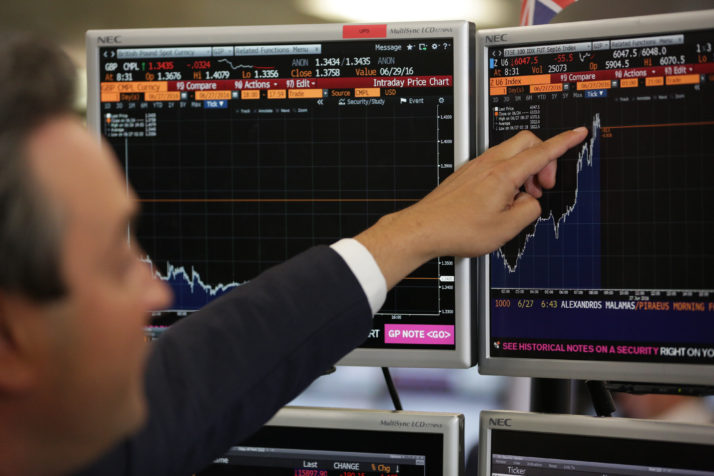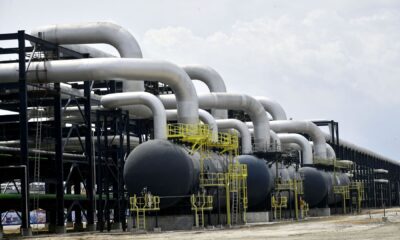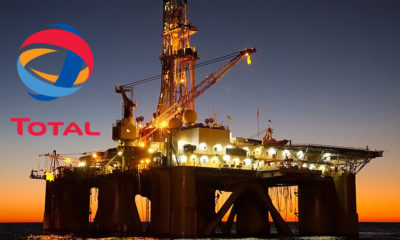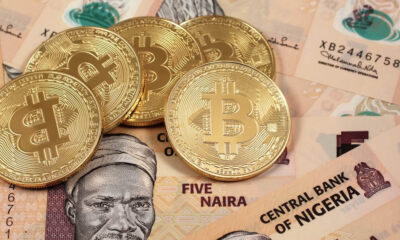By Jeffrey Halley, Senior Market Analyst, Asia Pacific, OANDA
Equity markets are higher in Asia today as US index futures rally after Meta managed to post minuscule growth in user numbers overnight along with robust financials. The results came too late to save OTC trading on Wall Street from a sideways day, but post-close extended trading has allowed the FOMO gnomes, always on the lookout for any sliver of a reason to buy, to work their magic in Asian hours. Nasdaq futures have rallied an impressive 1.25%, dragging S&P minis 0.70% higher.
Still, we shouldn’t rule out Wall Street returning to Seeker’s mode and singing The Carnival Is Over. This evening, both Apple and Amazon release quarterly results and I would argue these are much bigger dogs than Meta. Supply change disruptions, material price inflation and a cloudy outlook on the economic growth front are just some of the potential headwinds for both. I wouldn’t argue against a sparkling set of financials for Q1, but the real gold will be in their forward outlooks. Depending on what they say, today’s equity rally will either be real gold, or fool’s gold.
Looking outside of the tail-chasing circus we know as the equity market; the real world continues to paint a much more cautionary tale. China’s covid-zero concerns continue overhanging Asia, despite more promises of an infrastructure-spending feast from Chinese officials. Adjusted for inflation this year, the actual rise in spending on infrastructure, and thereby growth, isn’t so special on the Mainland.
The Russian ban on gas exports to Bulgaria and Poland sent natural gas prices surging in Europe again, and saw the Euro take another hammering. Oil prices held onto their initial gains from Tuesday after the announcement but didn’t add anything to them. If Russia expands its natural gas bans, it won’t stay that way and there seems to be a great deal of complacency and Ukraine fatigue in the market right now outside of Europe. Oil itself could be about to move lower though, as the Financial Times is running a story saying some of Europe’s largest energy companies are preparing to pay for energy imports via Rouble accounts opened at Gazprombank in Switzerland. If true, it will be a huge win for the Kremlin and pit EU politicians against European private companies. Either way that you look at it, it is unlikely to be supportive of the Euro.
Yesterday’s inflation print above 5.0% in Australia has the market scrambling to pencil in a rate hike from the Reserve Bank of Australia at its meeting next week. I’m still 50/50 on this one, especially with a Federal election due later in the month. June will be a live meeting though. AUD/USD rallied briefly after the inflation release but has since given all of that back. As risk sentiment indicators, the AUD, NZD, and CAD, and one could argue, Her Majesty’s British Pound, have taken a beating recently. Federal Reserve rate hikes, next week’s FOMC meeting, China growth slowdown, global stagflation, the Ukraine/Russia war, one has an all-you-can-eat buffet of risk to choose from at the moment. If you swat out the incessant buzzing from the equity market, other asset classes are universally suggesting a plethora of global headwinds.
Today’s data releases in Asia have been a mixed bag. South Korea Business Confidence in April remained robust at 87. That hasn’t helped the Korean Won though with the South Korean Finance Minister grumbling that the Won had fallen too fast. Expect more intervention from the Bank of Korea ahead. Japan’s Preliminary Industrial Production disappointed, rising just 0.30% in March. However, Retail Sales outperformed, rising by 0.90% in March YoY. An easing of social distancing restrictions in Japan could account for the surprise. All eyes are on the Bank of Japan policy decision due shortly.
The BOJ policy decision will be the highlight of the Asian session unless we get a headline bomb from somewhere. The decision could emerge any moment now but there is zero chance of the BOJ changing course on monetary policy. It will remain ultra-dovish, as evidenced by the BOJ standing in the market this week to buy unlimited amounts of 10-year JGBs to cap yields at 0.25%. In breaking news, the Bank of Japan has left policy unchanged, and the USD/JPY has jumped 1.0% higher to 129.70.
Keep an eye on developments out of Indonesia today. I do love this country, but the rapid policy about-faces by the government can be infuriating. Last night, Indonesia spoofed commodity markets once again, reversing the guidance of the day before that reversed the guidance of the President the day before that, and adding crude and refined palm oil back onto the export ban. That should be good for substitutes like soybean oil but isn’t good news for food and FMCG products globally. Please refer to my note earlier in the week for my views on food nationalism and the potential food crisis in 2022.
Europe releases a swath of second-tier data today, but Eurozone economic, industrial and consumer sentiment indicators, along with German Inflation will be the focus. Eurozone sentiment in April will continue to take a beating for obvious reasons, weighing on the Euro and Eurozone equities. In all likelihood, the Financial Times story on European energy companies capitulating and paying for gas in Roubles will capture the headlines. A collision course between Europe’s leaders and its private sector will be as good a reason to sell into any currency or relief rally as any.
The US releases Advance Q1 GDP this evening. The headline QoQ number is expected to retreat dramatically to 1.10% from 6.90% previously. That doesn’t tell the whole story though thanks to front-loaded inventory distortions. More important will be the consumer components. PCR Advanced Prices data for Q1 has upside risk. A number substantially higher than the previous quarter’s 6.40% will have the Fed tightening noises going up another notch. Having said that, I am sticking to my guns and saying that the Apple and Amazon results will set the tone for the New York session.
Asian equities surge higher with US futures.
Wall Street’s main indexes had a sideways day overnight, finishing almost unchanged from the day before. The Meta results though, have lifted US index futures sharply as Meta rallied by over 15% in extended trading, lifting other tech heavyweights. Nasdaq futures have rallied by 1.25%, S&P 500 futures are 0.70% higher, while the value-orientated Dow futures have risen just 0.20%.
That has been enough to spark a relief rally of sorts in Asia today, although a barrage of infrastructure spending talk in China helped lift the gloom in China markets yesterday. Japan’s Nikkei 225 has risen by 1.0%, with South Korea’s Kospi climbing by 0.60%, while Taipei has rallied by 0.75%.
In China, the Shanghai Composite has gained 0.35%, with the CSI 300 rising by 0.45%. Hong Kong is performing its usual Nasdaq tail-chasing act, rising 1.0% in sympathy today. Mainland equity markets are potentially holding back as mass testing gets underway in Beijing and news that parts of the port city of Qinhuangdao have been locked down. China’s Covid-zero issues have not gone away.
In regional markets, Singapore has risen by just 0.20%, Kuala Lumpur is 0.55% higher, with Jakarta gaining 0.45%. Bangkok is 0.10% higher and Manila has added 0.45%. Australian markets have climbed on the Meta bandwagon, the ASX 200 and All Ordinaries climbing by 0.95%.
The Financial Times story suggests a Rouble payment capitulation by European energy companies may give European stocks a reason to open higher today. The relief is likely to be short-lived as the obvious conflict between Europe’s political masters and its private sector will be a major test of European unity. In the US, results from Apple and Amazon will set the tone for the Wall Street session.
Japanese Yen Plummets as BOJ stays ultra-dovish.
The Bank of Japan has just reaffirmed its dovish stance at its policy meeting, and its commitment to cap 10-year JGB yields at 0.25%. Following on from a slight firming of US yields overnight, the Yen has plummeted in Asia as the US/Japan rate differential looks set to widen even more. USD/JPY has soared by 0.95% to 129.65 today, following a rise of 0.95% yesterday as well. Resistance at 130.00 has held this morning, but a retest seems inevitable now as broad US Dollar strength continues. Support remains at 127.00 and 126.00 and although the technical picture is overbought, any dips by USD/JPY should find plenty of willing buyers.
Elsewhere, the US Dollar powered higher overnight as risk-aversion, the threat of more aggressive Fed hikes and ever-widening interest rate differentials kept the US Dollars momentum going. The dollar index jumped by 0.68% to 103.00 overnight, taking out the top of a multi-year triangle at 102.50. In Asia. Yen weakness has flowed through to EUR weakness and combined, has propelled the dollar index 0.43% higher to 104.33. A weekly close above 103.00 resistance this week will have me pondering making a call for the 120.00 region in the months ahead. In the short-term, support lies at 101.00 followed by 99.75.
EUR/USD tumbled once again overnight, taking out support at 1.0600 as the Russian gas export ban on Poland and Bulgaria provided yet another headwind to the single currency. EUR/USD fell 0.74% to 1.0560. In Asia, the sell-off continues as the Yen plummets. EUR/USD has fallen 0.45% to 1.0510. The FT story that European companies are preparing to pay Roubles for Russian gas has had no positive impact today. The failure of the multi-decade decade support line at 1.0800 is a significant development, as it the ease with which it fell through 1.0600 support overnight. Although a short-term relief rally is not out of the question thanks to the oversold short-term technical picture, EUR/USD remains on track to test 1.0300. The response of European officialdom to the alleged plan to pay for gas in Roubles will likely dictate if parity is tested in the weeks ahead.
GBP/USD has consolidated just above 1.2500 overnight, easing to 1.2510 in Asia. EUR/GBP selling and GBP/YEN buying is adding some support to the Sterling today but have not been enough to spark an overdue relief rally as the relative strength index (RSI) is now at extreme oversold levels. Any relief rally will be short term as the broader technical picture is now signalling further losses to 1.2200 and potentially sub-1.2000 in the weeks ahead. GBP/USD would need to reclaim 1.3050 to change the bearish outlook.
AUD/USD edged lower overnight but has slumped in the face of US Dollar strength this morning. AUD/USD has fallen 0.50% to 0.7100, taking out support at 0.7150. Unless global risk sentiment swiftly reverses, AUD/USD looks on course to test 0.7050 and 0.6950 by early next week. NZD/USD has slumped 0.70% to 0.6500 in Asia as business confidence data plummeted and imports soared. Resistance is at 0.6700 but the failure of support at 0.6525 today could signal a test of 0.6400 this week.
US Dollar strength has lifted onshore and offshore USD/Yuan higher today as covid lockdowns spread and mass testing in Beijing begins. USD/CNY has risen by 0.40% to 6.5900. Meanwhile, USD/CNH soared through 6.6000, jumping 0.70% to 6.6315. With the PBOC seemingly unconcerned about the pace of the Yuan retreat, economic clouds domestically, and an expectedly hawkish FOMC due next week, further Yuan weakness seems inevitable. That will likely spill over into regional currency weakness as well.
Asian currencies are weaker today as well, thanks to the sell-off in the Chinese Yuan, a much weaker yen, and general US strength ahead of an expected 0.50% hike by the Fed next week. The Won has once again been a proxy for Asia’s nerves, USD/KRW rising overnight and gaining another 0.40% to 1271.00 today. That has prompted warnings by the Finance Minister that the pace of the fall is too fast. I expect to see intervention by the Bank of Korea ramp up and they won’t be alone among the region’s central banks. The Malaysian Ringgit has been surprisingly resilient. USDMYR holding at 4.3600. Soaring palm oil prices, thanks to Indonesia, appear to be supporting MYR for now. In the bigger picture, slowing China growth and higher US interest rates mean more Asia FX weakness ahead.
Oil slides on Rouble buying plan.
Oil markets were steady overnight as most of the news around the Russian gas ban on Poland and Bulgaria has been priced into the late New York session previously. In Asia, oil prices are sliding which I put down to a combination of two things. The start of mass testing around Beijing and the partial lockdown of the port city Qinhuangdao, and the FT article suggesting that major European energy companies will comply with Russia’s demands for payment in Roubles. The collision course with the people who run Europe is being ignored for now.
Brent crude has fallen by 1.45% to $103.65 in Asia, with WTI falling by 1.50% to $100.50 a barrel. I have some doubts as to whether Europe’s politicians will allow its private energy companies to capitulate to the Kremlin. That may bring forward more weaponizing of gas supplies by Russia. In this case, any retreat in oil prices could be the eye of the hurricane.
Content to stay out of the schizophrenic day-to-day noise of oil’s price action, my bigger picture view is that Brent will remain in a choppy $100.00 to $120.00 range, with WTI in a $95.00 to $115.00 range.
Gold suffers from US Dollar strength.
The storm clouds are darkening for gold as it wilts in the face of US Dollar strength, not helped by US yields also moving higher overnight. It seems that any risk-hedging buying is nowhere near enough to offset the selling pressure derived from US Dollar strength.
Gold tumbled by 1.05% to $1885.50 overnight, falling another 0.40% in Asia today to $1877.50 an ounce. Gold is now eroding support at $1880.00 and is in danger of taking out its 100-day moving average (DMA), just below $1875.00 an ounce. The risk is rising of another capitulation trade pushing gold sharply lower to its original triangle breakout at $1835.00 and then support at $1820.00 an ounce.
Only a sudden reversal lower by the US Dollar is likely to lift the pressure on gold now. It faces layered resistance at $1880.00 intraday, followed by $1890.00, $1915.00, and $1940.00 an ounce.


 Billionaire Watch3 weeks ago
Billionaire Watch3 weeks ago


 Startups4 weeks ago
Startups4 weeks ago


 News4 weeks ago
News4 weeks ago


 News4 weeks ago
News4 weeks ago




 Bitcoin4 weeks ago
Bitcoin4 weeks ago
 Naira4 weeks ago
Naira4 weeks ago
 Forex3 weeks ago
Forex3 weeks ago
 Treasury Bills4 weeks ago
Treasury Bills4 weeks ago
















